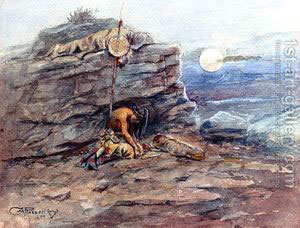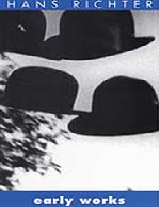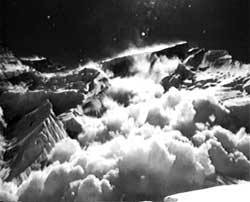 Deadly Pleasures
Deadly Pleasures
A short story by Pushkin tells of Cleopatra offering herself for a night to any man prepared to die the following morning. Two suitors present themselves and are duly executed the following day. Pushkin failed to complete the tale but D.M. Thomas in his novel Ararat proposes a neat solution: the third suitor enjoys his night of love but has no intention of fulfilling the rest of the contract…
John Casken’s Deadly Pleasures is a setting of the Pushkin tale as completed by D.M. Thomas for narrator and four instrumentalists, i.e. in the manner of Stravinsky’s Soldier’s Tale.
In the composer’s words:
D.M. Thomas’s completion of Pushkin’s poem about the death of Cleopatra, following her invitation to three men each to spend the night with her in return for their head the next day, is both dramatically vivid and painfully human. Each of the men is strongly characterised in Thomas’s text, while Cleopatra herself has an insinuating and seductive presence throughout. The whole atmosphere is highly charged and invites a musical and dramatic response on a similar level.
 Bergliot
Bergliot
The epic-dramatic poem Bergliot, by the Norwegian poet Bjørnstjerne Bjørnson, is one of that writer’s most significant works. Clearly its stark, resonant declamation inspired Grieg to evoke the world of the Nordic sagas in similarly dark sonorities. His work, for narrator and orchestra (arranged here for chamber forces by Edward Rushton), tells the story of Bergliot, the wife of the de facto ruler of Norway, Einar Tambarskjelve. Both her husband and her son are assassinated by a pretender to the throne, Harald. The grieving widow calls on her kinsmen to seek revenge, but finally accepts that vengeance will not bring back her loved ones.
Grieg’s score contains not one but two magnificent funeral marches, the first noble and stirring, the second making reference to Siegfried’s Funeral March in Götterdämmerung. The story is narrated by Bergliot herself but the spoken part rises to a pitch of heightened emotion as the deaths of her husband and sons are recalled.
 Lenore
Lenore
Liszt’s setting of Gottfried August Bürger’s poem Lenore (1857–8) was the first of five works he wrote for narrator and piano. It tells the story of a young bride, Lenore, mourning the disappearance in war of her husband-to-be William. Her mother tries to console her but in vain. As she grieves, William appears to her and carries her through the dark night, on his horse, promising the comforts of a bridal bed when their hundred-mile journey is finished. The ghostly midnight ride, with the beat of clattering hooves, forms the central part of Liszt’s setting. As the climax of the poem is reached it becomes clear that William is already dead and Lenore has come to join him in the grave.
 MM51/Nosferatu
MM51/Nosferatu
The late Mauricio Kagel was a German composer, film maker and playwright of Argentine birth, whose exploration of these various genres led to an oeuvre outstanding for its brilliant theatricality and bizarre humour.
MM51 originated as what the composer described as ‘a piece of film music for piano’. In this later version the pianist performs the music in front of a screen on which is projected a sequence of scenes from F.W. Murnau’s silent film Nosferatu. The work is a short, sharply humorous piece of musical theatre, featuring a wind-up metronome and a pianist who finishes his performance with a laughing fit and fake heart attack. Vintage Kagel: funny, slightly sinister and utterly mesmerising.
 The Castle by the Sea
The Castle by the Sea
Richard Strauss’s two melodramas, for narrator and piano, were written for the composer himself to perform with the actor Ernst von Possart. One of them, Enoch Arden, was based on a German translation of Tennyson’s poem; the other, less well known, is the haunting Castle by the Sea (based on Ludwig Uhland’s poem Das Schloss am Meere).
The Castle by the Sea tells the story of the beautiful daughter of a king and queen who at the end of the short poem is found lying pale in her coffin. The music takes on an antique quality, while simultaneously recalling the radical experimentation of late Liszt.
The work is presented by Counterpoise in a new chamber arrangement commissioned from David Matthews.
 Ghosts before Breakfast
Ghosts before Breakfast
Ghosts Before Breakfast is the conventional (if inaccurate) translation of the title of the film Vormittagsspuk by the dadaist artist Hans Richter. Dating from 1927, the film is a cult classic with its surreal sequences of flying bowler hats, teacups magically filling by themselves and animations that anticipate those of Monty Python’s Flying Circus by half a century.
The cast of the film includes Hindemith, Milhaud and his wife, Werner Graeff (scenario) and Richter himself. A score for pianola by Hindemith, written to accompany the film, was destroyed by the Nazis. A new score has been commissioned specially for these performances by Counterpoise from the composer Jean Hasse, whose recent music for Murnau’s Faust was performed to acclaim in Bristol and London.
 On the Edge
On the Edge
On the Edge is the latest work to be commissioned from the triumphantly successful husband-and-wife team of Edward Rushton (composer) and Dagny Giolami (librettist). They have been acclaimed by leading critics for their previous work as outstanding new talents in music theatre (‘A marvellous piece, original in structure…and both funny and moving…A triumph for all concerned’ The Guardian on Birds. Barks. Bones). Their latest opera, The Shops, enjoyed a sold-out, three-night run at the Linbury Studio Theatre.
On the Edge has been highly praised in the national press:
"subverts all melodramatic conventions", Independent on Sunday
"Post-Modern games played with the Romantic spirit", The Times
"Rushton's score struck sparks off words and pictures", Evening Standard
On the Edge is a boldly innovative, cross-genre project bringing together elements of music, theatre and visuals. The story, set in the Swiss Jungfrau region, takes as its starting point the memoirs of Sir Arnold Lunn, the inventor of the slalom, and his recollection of his wife’s near-fatal accident while climbing the Jungfrau. The scenario also weaves in the terrifying booming sounds that herald an avalanche, a light-hearted philosophical discussion of the purpose of sport and a Swiss folktale. The 35-minute piece alternates music and narration to create a work which, in the composer's own words, is 'colourful, strange, multilayered and slightly absurd'.
On the Edge occupies the second half of a programme. Complementary repertoire suggestions are shown on the Programmes page. The items have been carefully chosen to integrate music with visual image or text. The technical components of the project are adaptable to a variety of venues, both sacred and secular, and the multi-media aspect should recommend it to festivals, theatres, university music departments and other promoters. The involvement of the well-known actress Eleanor Bron and the distinguished bass Richard Angas as narrator offer a further attractive box-office proposition.
The ensemble intends On the Edge to be the first of a series of works exploring the interface of music, narrative and visuals. The new works will be small-scale, cutting-edge and affordable: flexible music theatre that can be toured all over the country and very possibly to Europe too. It also offers opportunities to artists from various disciplines and will encourage the development of further works that draw on a number of art forms.

